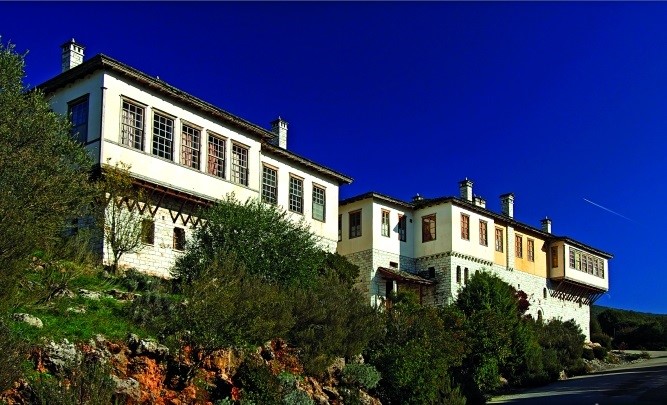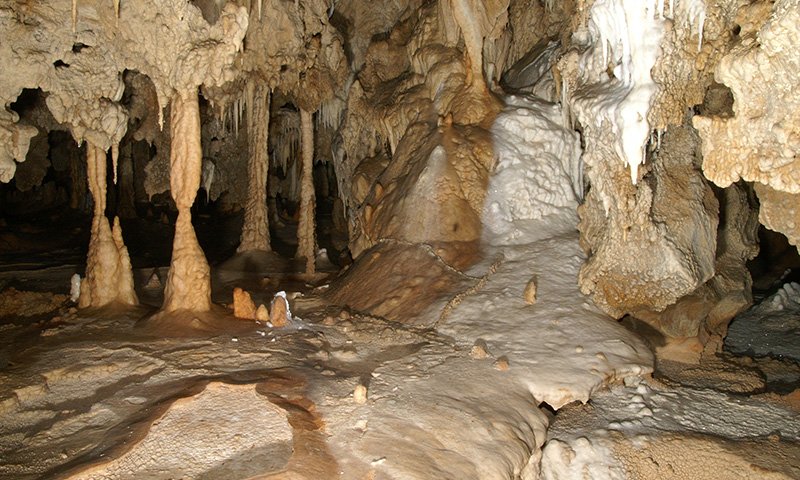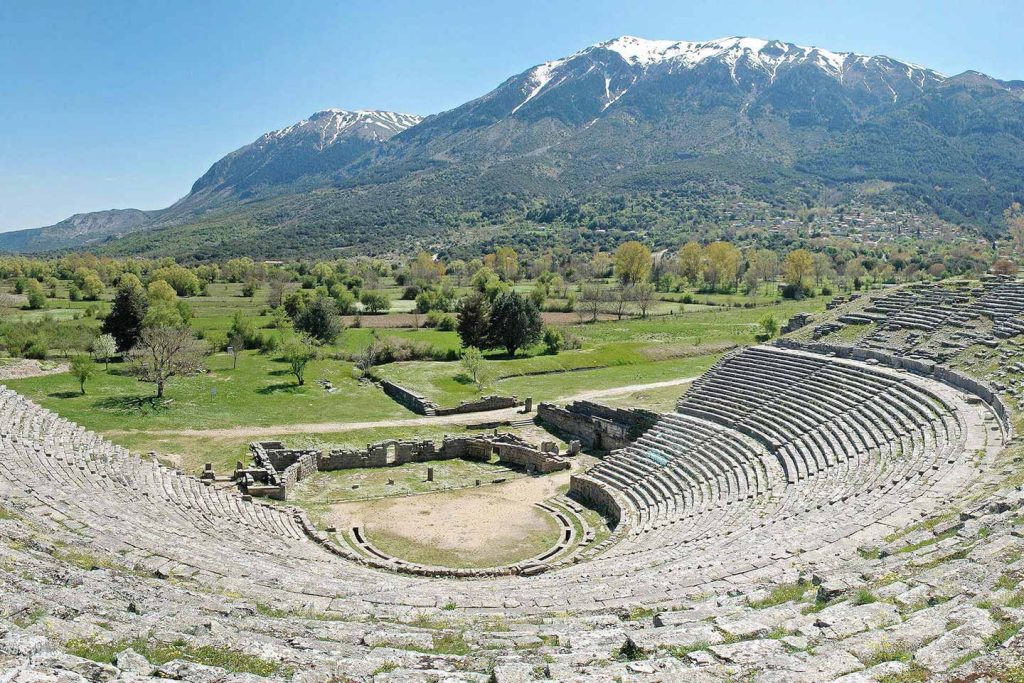Ioannina Tour
Estimated Duration
11 Hours
Overnight Stay
Overnight Stay In A Hotel By Arrangement
Estimated Distance
710 Km

Castle of Ioannina
The Castle of Ioannina is in Ioannina, on the western shore of Pamvotida lake.
It was built in 528 AD, during the reign of the Emperor Justinian, under the fortification program of the Byzantine territory. The Castle of Ioannina expands over the years, but during the Turkish occupation seems to be almost ruined and deserted. At the end of 18th century, the famous Ali Pasha assumes administration of the city, rebuilt the walls and interiors of the castle.
Inside the castle of Ioannina, the two acropolis stand out: the southeast or otherwise Its Kale and the northeast or Aslan Pasha.
In the northeastern acropolis there is the mosque of Aslan Pasha, with a breathtaking view of the lake and the city of Ioannina. The mosque was built upon the ruins of a Christian church and today houses the Municipal Museum of Ioannina. Three more buildings from the Ottoman era have been found in the wider area: a Turkish bath, a library and the Soufari-serai.
In the southeast acropolis stood the majestic seraglio of Ali Pasha, which was completely destroyed in 1870 by fire. In its place, the building that now houses the Byzantine Museum of Ioannina was built. At the acropolis’ highest point, you will find the Fethiye Mosque and next to it the grave of the legendary Ali Pasha that contained only his body, as his head had been sent to the Sultan. Also, here can be found the sole ruins of the medieval castle, the so-called Tower of Bohemond.
Anyone visiting Ioannina must visit the castle of Ioannina too. The unique character of the buildings, the interesting museums and the wonderful views, deserve every minute spent there.

Pamvotida Island
The small island is probably the only inhabited island on the world without a name. Therefore, it is called “island of the lake” or the “island of Ioannina”. It is located near the northern shore of Lake Pamvotida and it has one village with around 250 inhabitants, most of whom are engaged in fishing. The “island of Ioannina” is the second inhabited lake island in Greece along with Agios Achilleios in Mikri Prespa Lake. It covers an area of 200 acres, having maximum length 800 meters and maximum width 500 meters. Most of the area is covered with pine trees, while its west side is swampy.
The little village is built around the small natural port, at the northern end of the island and has been listed as traditional as it is an important sample of traditional Epirotic architecture with stone houses and slate roofs. The island is a place of incredible natural beauty and historical significance. It is home to seven monasteries that form the third largest monastic state in Greece, after Mount Athos and Meteora.
According to tradition, the first people to settle on the island, came from Mani, Peloponnese in the 17th century. Historical reports state that the Monastery of Agios Nikolaos of the Philanthropists was the first one to be built in the 13th century. Around the same time, the Monastery of Agios Nikolaos Dilios (or Stratigopoulos) was founded. The monastic community reached its peak in the 16th century with the foundation of two more monasteries while during the next century the last three were founded. Most of the monasteries were built with the sponsorships of important Byzantine families.
During the reign of Ali Pasha, the Island experienced a rapid decline due to the heavy taxation imposed on its residents, whereas its monasteries were almost abandoned. In 1820, the clash of Ali Pasha with Sultan Mahmud II resulted in Hurshid Ahmed Pasha turning against him and besieging the city of Ioannina. The Island was protected by a garrison of a thousand Albanians, thus Hurshid launched a bombardment that caused extensive damage. Realizing his imminent defeat, Ali took refuge on the island in January 1822. He was ultimately killed in the Monastery of Saint Pantaleon. You can still see the holes on the floor of the bullets that killed him.
The monastery now houses the museum of Ali Pasha. Among the exhibits, there are local costumes and documents of this era and many personal belongings of Ali Pasha.

Paul Vrellis Greek History Museum
The Pavlos Vrellis Greek History Museum (Greek: Μουσείο Ελληνικής Ιστορίας Παύλου Βρέλλη) also known as Pavlos Vrellis Museum of Wax Effigies is a privately owned wax museum in Ioannina regional unit, Greece. It was set up by the sculptor Pavlos Vrellis in February 1983, and is the best known wax museum in Greece. The museum hosts 150 wax models in 37 themes, inspired by various events from Greek history.
The Museum’s main building is located 14 km (9 mi) south of the city of Ioannina, Epirus, in Bizani municipality, on the Ioannina – Athens national road. It was owned by local sculptor Pavlos Vrellis, who founded the museum in February 1983. The museum facility covers an area of 2,500 m2 (2,990 sq yd) and is built according to the traditional, local, fortress-type architectural style of 18th-century, according to Vrellis’ own design.
The wax effigies of the museum are displayed in life size, included in a faithful representation of the environment of their age and revive forms of the local history. Without storeys but on a variety of distinct parallel and connecting levels. The visitor moves along mountains, houses, caves, churches, and alleys, following a non-circular but endless course, ingeniously devised and arranged.

Cave of Perama
The Cave of Perama, Ioannina, is located just five kilometers from the city center of Ioannina in the homonymous suburb of Perama, on the hill Goritsa. His feet are bathed in the lake Pamvotida of Ioannina, which became famous with the legend of Kyra-Frosini and Ali Pasha.
The cave spans nearly 15,000 square meters and includes 19 different types of stalactites and stalagmites as well as underground lakes and fossils of animal teeth and bones. An area of just over 1000 square meters is open to the public and guided tours average around 45 minutes to complete. The cave is open to visitors year-round from 8 am until sunset. Cost of admission is 6 Euros per person, and students and families with multiple children pay 2.5 Euros.

Archaeological Site of Dodoni
The ancient site of Dodona is located 22 km south of Ioannina, in the narrow valley between the mounts Tomaros and Manoliassa. The first remains on the site date from the prehistoric period and the first deity worshipped here was the Earth goddess. The cult of Zeus and the sacred oak tree was brought to Dodona by the Selloi, a branch of the Thesprotian tribe, between the 19th and 14th centuries B.C. and soon became the prevalent cult of the sanctuary.
The first offerings from southern Greece date from the end of the 8th century B.C. and building activity began in the 4th century B.C. The sanctuary reached the highest point of its prosperity in the 3rd century B.C. but was destroyed by the Aetolians in 219 B.C. It was rebuilt shortly thereafter and continued to be in use until its destruction by the Roman invaders in 167 B.C. In the Roman period it had a different function and its end came in the 4th century A.D., during the reign of Theodosius the Great.
The area of the sanctuary was then covered with Christian basilicas. Today the theatre is used for performances.
The first excavations on the site, carried out by N. Karapanos in 1873-75, confirmed the location of the sanctuary and revealed a great quantity of finds. The following excavation campaign was undertaken shortly after 1913, by the Archaeological Society, under the direction of G. Soteriades but was stopped by the events of 1921.
The site was again investigated by D. Evangelides in the period from 1929 until 1932 and in the 1950’s under the direction of D. Evangelides and S. Dakaris. Since 1981 the Athens Archaeological Society commenced a new series of systematic excavations on the site with the financial support of the University of Ioannina.

